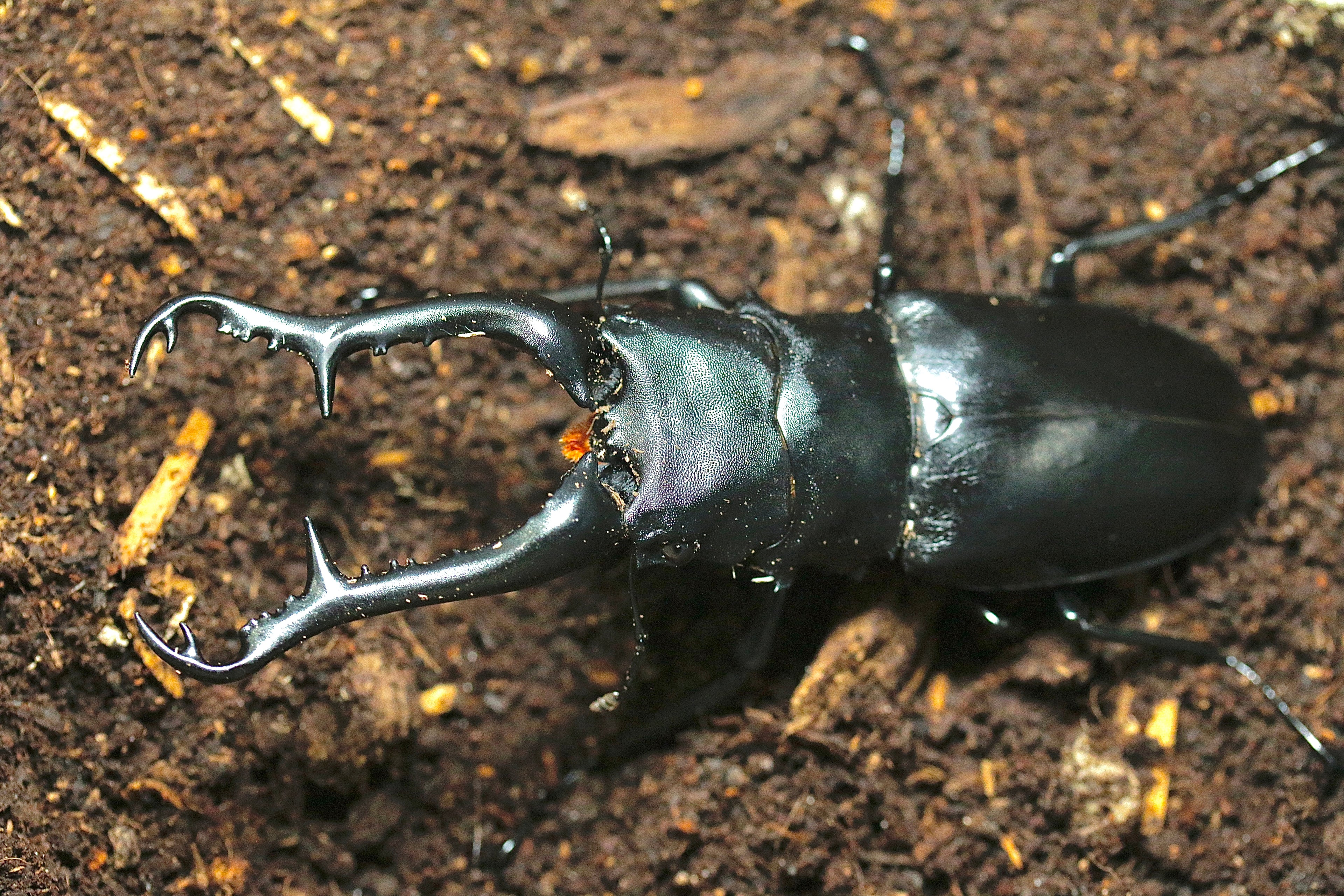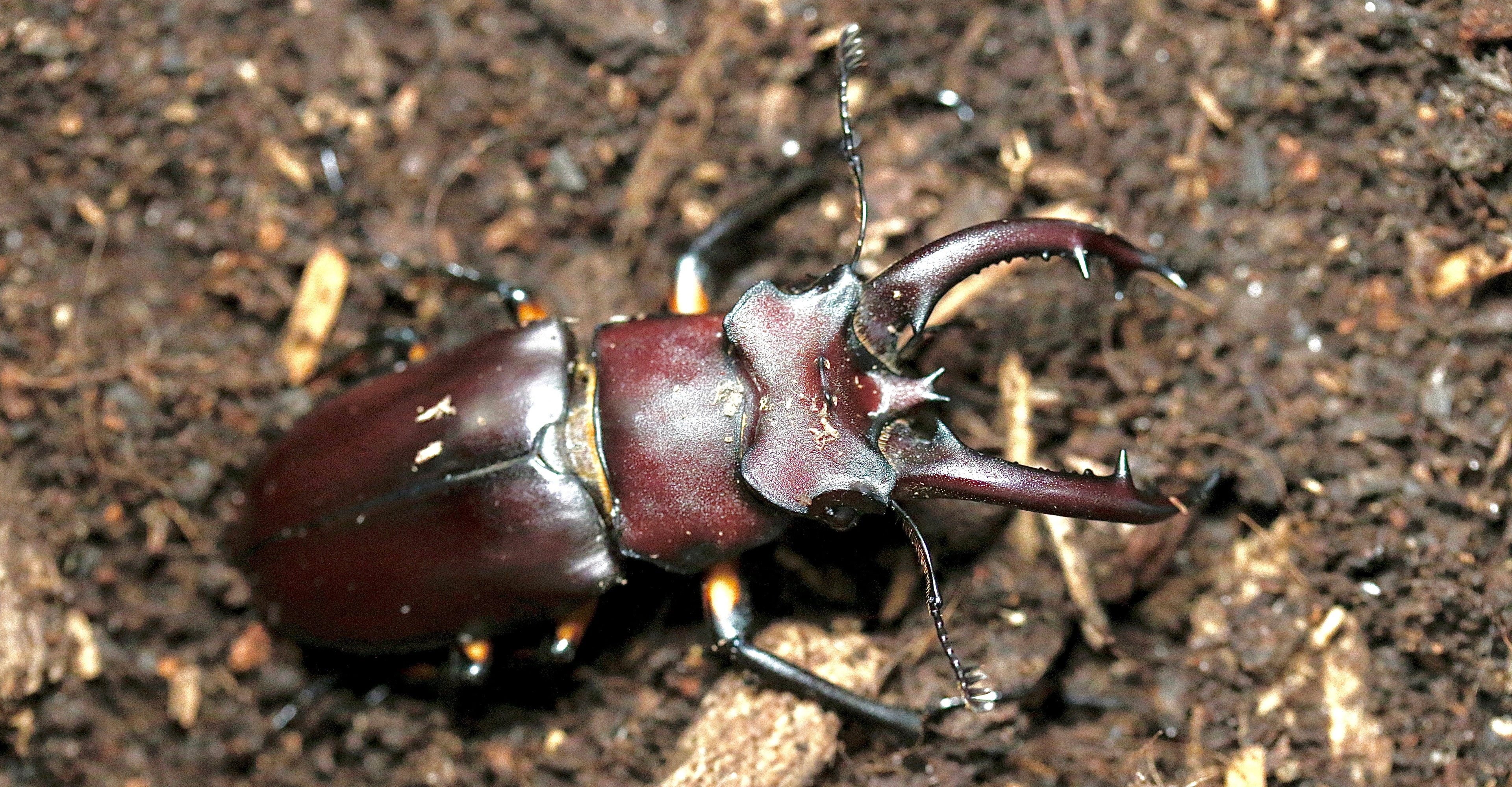

Caring for Larvae
A beetle larva is your first step to raising your beetle. To ensure the health, strength, and overall quality of your beetle, it helps to understand the different stages of development and how to care for them through each stage. Beetle larva sheds skin or molts every instar, their head capsule becomes bigger every time they molt, it is important to note that L1 is the most fragile stage and at this stage, larva should not be bothered excessively.
Environment Preparation General Rule:
The container size your larvae will need depends on the species you are raising, how big they have grown and can grow, and their sex. but each container should have about 3-4 small holes to let in air. This allows the larvae to get oxygen, but still retains the moisture in the flake for over 3 months. It is important to not allow for too much ventilation. Generally, you want your flake soil to last at least 2 months for your larva to eat and at the same time provide enough horizontal space for your L3 larva to turn into pupa. horizontal space should always be at least bigger than your beetle’s length. For example, if a male rainbow stag beetle larva is projected to become 40-60mm as adult, it is important that the horizontal space of your container is at least 60mm, I do recommend horizontal space to be at least 1.5 times the beetle’s projected length to ensure safe pupation.
General Container Size Recommendations:
First-instar larvae (L1): 8oz-16oz
Second-instar larvae (L2): 16oz-32oz
Third-instar larvae (L3): 16oz -64oz+
Food/ Flake Soil Preparation and Maintenance:
Rhinoceros, and stag larvae feed on decayed wood in nature. However, beetle hobbyists feed their larvae flake soil (fermented sawdust). It is safe and stable for the larvae compared to wild decayed wood. Stag beetles tend to prefer single fermented flake, while Rhinoceros beetles prefer double fermented flake. Both are provided at James Beetle Farm
Aeration of Flake Soil
Aeration of flake soil is very important and crucial to the health of your larva. If this step is skipped, your larva could potentially suffocate. Always aerate your new soil as a precaution, even if it is not producing heat or smells of ammonia.
Flake soil is generally sold in air-tight bags. Therefore, upon receiving your flake soil, you must aerate the soil for a few hours before use. If you do not, there may be harmful gases and heat. This aeration process lets beneficial bacterial and fungal colonies into the soil to stabilize it, making it a healthy environment for the larva.
Flake Soil Aeration Guide
- Pour flake soil into a container.
- Add water to the flake soil if it’s below the standard humidity.
- How to check for standard humidity: A common way to check the moisture content is to hold a handful of the flake soil and compress it. If the soil clumps without any moisture seeping from your hand, then the moisture content is correct. (Note: The flake soil may be slightly wetter or drier than standard depending on your beetle species.)
- Cover the container with a cloth or breathable mesh cover to prevent fungus gnats entering your container.
- Let the flake soil sit for a few hours within the container.
- Check if the flake soil is generating heat or if it smells like ammonia. If it is, it is not ready. Mix the flake soil around and wait a couple more days.
- Once the flake soil is stabilized (no heat or smells of ammonia), you can now feed it to your larva.
- Keep in mind when you’re packing your container with the flake soil that rhinoceros beetles should have the flake soil packed more loosely. For stag beetles, you want to pack the flake soil more tightly.
https://youtu.be/QmFvHmRAgpI?si=27vFzLzGRL3_vEXm
Here is a video on flake soil aeration by “Mountain Forest Beetle” a highly recommended channel for beetle larvae rearing enthusiasts and beginners to watch.
Once the flake soil has been eaten by the larva, you must change it out. This can occur every 2-4 months or when ⅔ of the flake oil has been turned into feces, depending on which occurs first. Rhinoceros larvae will leave more observable feces, while stags do not. I recommend changing your flake for your stags every 2-4 months instead of trying to check for feces because flake soil can get rotten naturally as well.
When you are replacing the flake soil, keep a little bit of the old flake soil and mix it with your new flake soil so that the larva can adapt to the new soil more easily. The percentages vary depending on species; for stag beetles, keep about 10%. For rhinoceros beetles, keep about 30-50% of their original flake soil. This is very important because flake soil from different sources can use different raw materials, nutrients and ratios of each. The original flake soil mixing with the new will help keep it stable and consistent for the larva. If you do not wish to reuse the old flake soil for various reasons such as pest infestation, you can also change 100% of the flake soil, just simply pack the flake soil inside the container and put your larva on the top, so your larva can get used to the new flake soil as it digs down itself.
Temperature:
In general, you can keep the larva at room temperature. 68-80°F is a good range for most beetle larvae species. 70-80°F is the optimal temperature for most species. There are some exceptions to this however, such as: Dynastes Neptunus which prefer colder climates. It is important to not allow temperature to go over 85°F as it can suffocate your larva by potentially referment the flake soil.
If you have any further questions, please contact us at
https://jamesbeetlefarm.com/pages/contact
Or get help from our amazing Discord community!
